Finding your voice
As voice-enabled assistants become the norm, how can retailers make themselves heard?

Alexa, how will voice technology transform retail?
This is the question on many retailers’ lips as voice-enabled devices such as Amazon Echo and Google Home make their way into homes across the nation.
In this special report – the first in Retail Week’s Transformative Tech series that explores the far-reaching impact of new technology across retail – we uncover how voice technology will change the way consumers search and buy products, and what retailers should do to take advantage.
Amazon sold more than 33 million Echo smart speakers last year while Google has shifted more than one Google Home device per second since it launched last October.
"Voice is going to be enormously disruptive and retailers are significantly underestimating how quickly it’s going to come"
The voice-enabled assistants on these devices have been hailed as the most important technological development since the iPhone, and are tipped to drive a similar change in behaviour.
“There’s a whole generation right now, where the youth is developing this idea where it’s normal to speak with your house,” Max Amordeluso, EU lead evangelist for Alexa at Amazon, told delegates at the Millennial 20/20 event last month.
And retailers expect this to transform shopping behaviour.
“Around 10% of UK households now have a smart speaker device, and we think voice activation is set to be one of the next big retail shifts when it comes to technology,” says Tesco Labs head of research Paul Wilkinson.
Schuh director of ecommerce and customer experience Sean McKee agrees: “We’re already seeing customers using voice technology to search for products.
“We can see how shoppers would use voice in a number of ways – from searching for specific products to tracking orders.”
Read on to find out how voice technology will transform search, shopping and engagement, customer service, delivery and distribution, and what you should be doing about it.
Join the conversation…
What does the future hold for voice technology in retail? Join the conversation on our social media platforms:
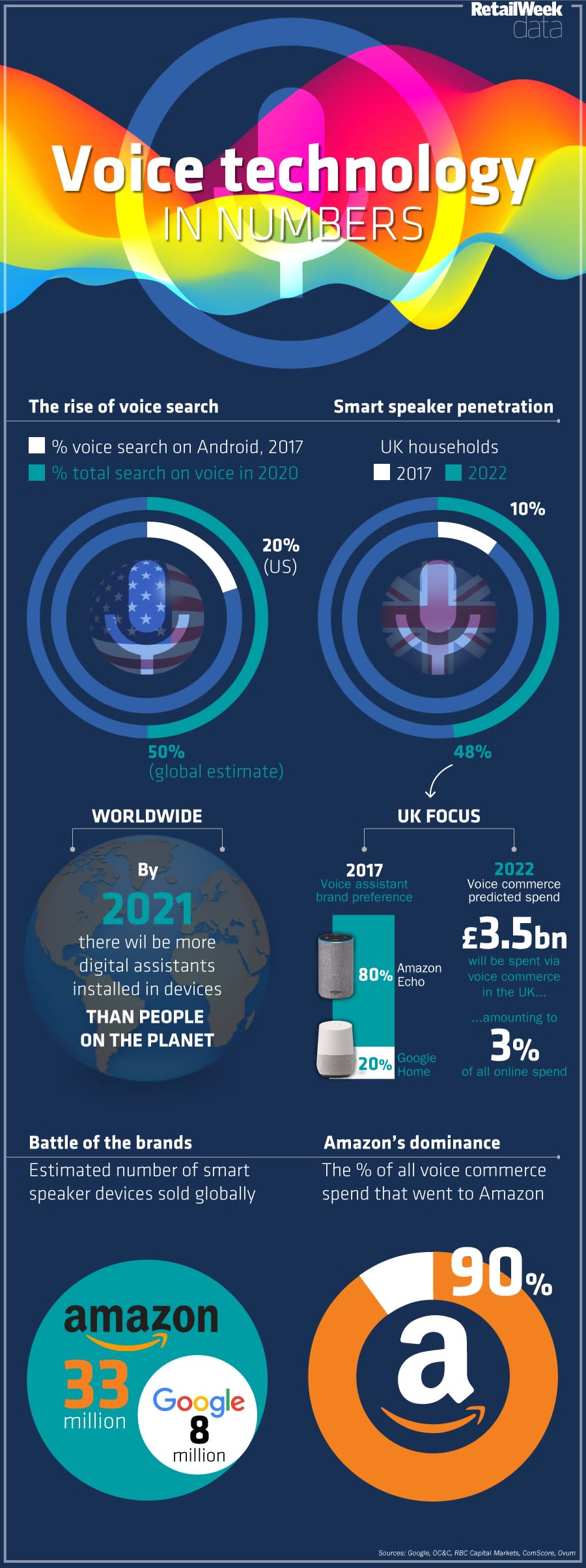
VOICE TECH – THE POTENTIAL
Voice technology has been hailed as the new battleground, with many commentators believing voice-enabled assistants are the most important development since the iPhone.

The technology has actually been on the scene for some time. Voice capabilities have been built into Google search since 2009, while Apple introduced Siri on its iPhone back in 2011.
However, recent advances in speech recognition and natural language processes have helped make voice an essential tool for many consumers.
"By 2021, there will be more digital assistants than people on the planet"
In fact, satisfaction levels for voice interactions are now relatively high.
“94% of people say they’re now satisfied with the interaction,” says Accenture managing director of retail technology consulting Rob Barnes.
“In the early days, when we used voice on our phones and you’d ask to call your mum and you’d be calling Nigel from the office, the ineffectiveness would stop you using it. There’s been a tipping point.”
In fact, Google says that 20% of all Android searches in the US are now carried out by voice.
But it is the emergence of the voice-enabled assistant – pioneered by Amazon’s Alexa – that has stimulated a big uptick in the use of voice technology. And usage is set to explode.
Analysts at RBC Capital Markets estimated that in 2017 Amazon sold 33 million Echo smart speaker devices, which host its digital assistant Alexa.
“There’s a whole generation right now, where the youth is developing this idea where it’s normal to speak with your house,” Max Amordeluso, EU lead evangelist for Alexa at Amazon, told delegates at the Millennial 20/20 event last month.
Amazon is not alone. All the major technology platforms – Google, Apple, Microsoft and Samsung – are vying for a slice of the voice assistant market.
The technology is becoming so widespread that research consultancy Ovum estimates by 2021 there will be more digital assistants installed in devices than there are people on the planet.
Voice and shopping
Playing music or asking what the weather is like may still be the most common uses of voice-enabled devices, but users are finding new functions, including searching for and buying products.
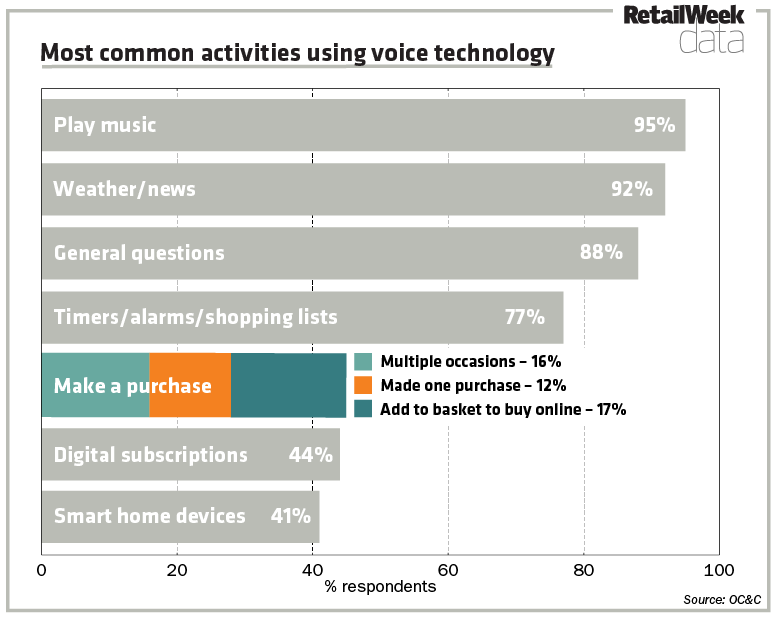
Amordeluso revealed that 42% of Amazon Echo users had added an item to a shopping list.
Google UK head of search Alessandra Alari says: “We are beginning to see voice become an everyday, accepted behaviour, moving from an experimental tool and party trick to becoming more fully embedded in how we live our lives.”
Consumers aren’t just searching for products via voice – they are also buying them.
According to research by consultancy OC&C, 16% of smart speaker users have bought products via the device more than once.
Tesco Labs head of technology research Paul Wilkinson predicts that voice will have a big impact on retail.
“Around 10% of UK households now have a smart speaker device, and we think voice activation is set to be one of the next big retail shifts when it comes to technology,” he says.
OC&C estimates that $5bn (£4.4bn) will be spent through voice commerce in the UK by 2022, representing 3% of all online spend.
New behaviours emerge
Voice is already changing how people shop. Tesco director of online business services Rafael Orta told IGD Online and Digital Summit late last year: “What we’re seeing is a more continuous basket construction.”
Shopping by voice is in its infancy and the bulk of orders are made by consumers who know precisely what they want to buy.
As a result, groceries and items such as electronics and homewares are the most common purchases.
However, the next generation of Google and Amazon voice-enabled devices have in-built screens, which should open up voice commerce across products that need to be seen, such as clothes.
And voice technology will not be limited to smart speakers.
Amazon has opened up its voice framework and there are now more than 50 products – from cars to kitchen appliances – that are capable of giving Alexa a voice.
Already car manufacturers, including Ford, BMW, Mini, Seat, Skoda and Toyota, are integrating Alexa into their vehicles.
Vista Retail Support technical services director James Pepper says this could enable shoppers to order products in their car and have sat-nav systems instantly programmed with directions to the nearest location to collect from.
Barnes says: “Voice is going to be enormously disruptive and retailers are significantly underestimating how quickly it’s going to come.”
Retailers need to understand how their customers will use voice technology on a day-to-day basis and determine how this will impact interactions with their brand, or risk being left behind.
Meet the voice assistants
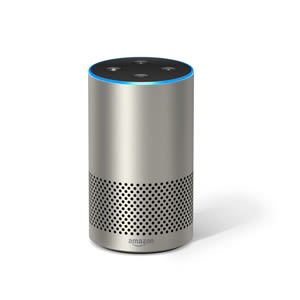
Name: Alexa
Powered by: Amazon
Launched: 2014 for US Amazon Prime members, 2016 in UK
Compatible devices: Echo and Echo Dot speakers, Echo Show (with screen), Echo Look (with camera) and Echo Tap
Key feature: The Alexa devices can hear you in noisy environments
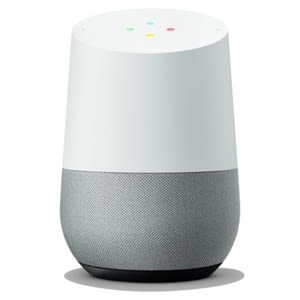
Name: Google Assistant
Powered by: Google
Launched: 2016
Compatible devices: All modern Android phones and Google Home speakers (launched 2017)
Key feature: Access to all of Google’s intelligence, and no need to teach it skills
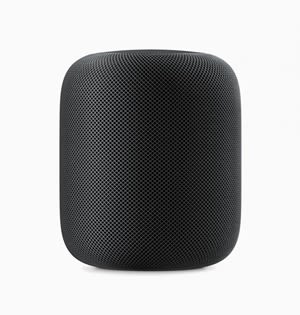
Name: Siri
Powered by: Apple
Launched: 2011
Compatible devices: iPhone, Apple Watch, AirPods and HomePod speaker (launched in February 2018)
Key feature: Integrated with iOS (the Apple operating software)
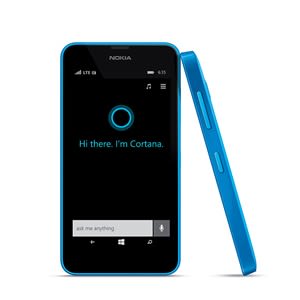
Name: Cortana
Powered by: Microsoft
Launched: 2014
Compatible devices: Microsoft phones, Windows 10 PCs and Invoke speakers
Key feature: Integrated with Windows
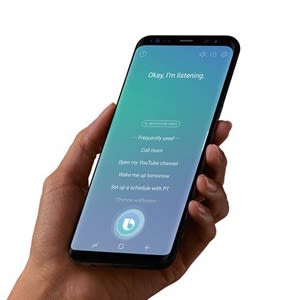
Name: Bixby
Powered by: Samsung
Launched: 2017
Compatible devices: Samsung smartphones and Family Hub 2.0 refrigerators
Key feature: Understands natural language
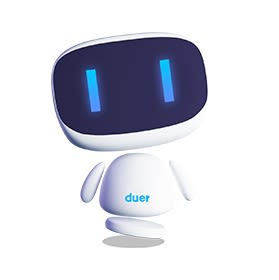
Name: Duer
Powered by: Chinese search engine giant Baidu
Launched: 2017
Compatible devices: Little Fish speakers (video and camera), Sengled smart lamp speaker, PopIn Aladdin smart lamp, and Huawei and Xiaomi phones.
Key feature: Takes users’ previous searches and location into account when providing assistance
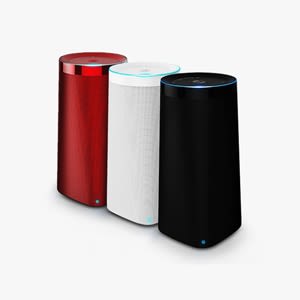
Name: LingLong
Powered by: Chinese ecommerce giant JD.com
Launched: 2016
Compatible devices: DingDong A1, A2 and A3
Key feature: English lessons for children
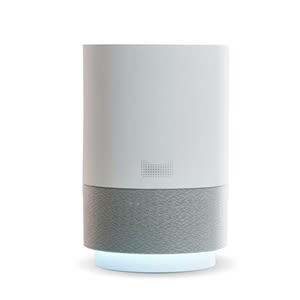
Name: AliGenie
Powered by: Alibaba
Launched: 2017
Compatible devices: TMall Genie, Genie FireEye
Key features: Voice/print recognition to ensure only authorised users can make orders using the device
VOICE TECH AND SEARCH
Consumers are increasingly using voice to search for products, companies and services, with media analytics firm ComScore forecasting that half of all searches will be carried out this way in just two years.

People tend to search differently via voice than they do through text search as, unsurprisingly, they use a more conversational tone.
Alessandra Alari, head of search at Google UK, says: “One of the reasons people are using voice search is that it offers a hands-free way to get quick answers.
“But moving from typing to talking changes how people use search in a broader way. For instance, almost 70% of queries to Google Assistant are being asked in normal, natural speech, as opposed to the keyword phrases people generally type into a search box.
“Using a voice assistant feels much more like a human conversation.”
Topping Google search
All brands and retailers strive to land at the top of search results. However, this is even more crucial for voice searches. Shoppers do not want to listen to an endless list of responses to voice queries – they want just one answer.
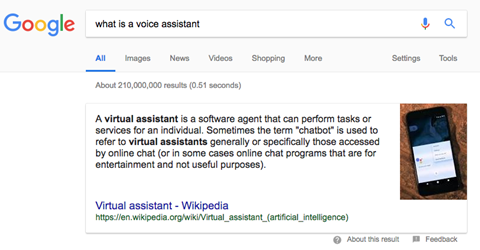
An example of an ’answer box’ on a Google search results page
An example of an ’answer box’ on a Google search results page
Google has been evolving to respond to the growth of voice search and, for the past couple of years, has provided ‘answer boxes’ to a wide range of queries.
These answer boxes also determine the answers given to Google Home users.
Unlike the world of text search, businesses are unable to pay for voice search terms currently.
Google tried to introduce paid advertising into search results last year, but this was not warmly received.
In the US, Google Home customers who asked for a summary of the day complained when Google Assistant told them about the opening of Beauty and the Beast in cinemas. The search giant swiftly removed the ad.
However, reports surfaced earlier this year that Amazon is in talks with consumer goods giant P&G and cleaning products firm Clorox to promote their products on its Echo devices.
"Shoppers do not want to listen to an endless list of responses to voice queries – they want just one answer"
Accenture managing director of retail technology consulting Rob Barnes believes consumers will not tolerate paid-for search results.
“If they think the results are biased and not tailored to them, they’ll not continue to use the device,” he says.
“The platform businesses don’t want that. They are far more interested in the data and trying to pair people up with the right product.”
The focus for brands and retailers should therefore be SEO and making sure they have content that surfaces at the top of relevant search results.
Alari says: “For brands, the key to optimising for voice search is knowing what the questions are likely to be, and why your product is the answer.”
Alan Boughen, president of paid search EMEA at advertising giant Omnicom Media Group, says pre-existing tools such as Google Keyword Planner can help brands understand what is being searched for.
He recommends retailers use websites such as AnswerThePublic.com to map out the types of questions consumers ask about products and brands.
Retailers should then set about creating content to answer those queries.
This content needs to be structured in a way that Google rates highly. Boughen says the search engine prioritises web pages with “structured data” and recommends that brands use websites such as Schema.org to make it easier for webmasters to assess content.
Jeremy Pounder, futures director at media agency Mindshare, says a brand’s credibility in the area being searched is also taken into account by Google.
Reviews and social recommendations are important factors while determining credibility, so Pounder urges retailers to build strong relationships with influencers in their field.
How does Amazon do it?
Amazon’s digital assistant Alexa makes product recommendations based on relevant items in a customer’s order history or basket in the first instance.
If a customer has not made a purchase of that nature before, Alexa will suggest an ‘Amazon’s Choice’ product.
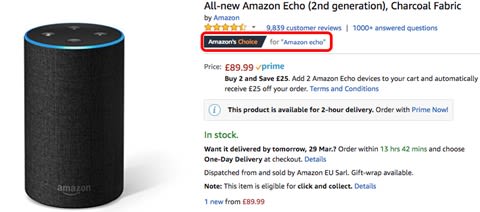
An example of an Amazon’s Choice product
An example of an Amazon’s Choice product
Amazon’s Choice products currently only exist in more “functional” categories, such as electronics, and health and fitness.
In categories that do not currently have the Amazon’s Choice feature, the top search result is read aloud.
Currently, brands cannot advertise or sponsor search terms on Amazon Echo.
Products attain Amazon’s Choice status based on being popular and well-priced, having strong customer metrics and excellent supply chain metrics.
Amazon Choice selection criteria
| Product | Customer experience | Supply chain |
|---|---|---|
| Average product rating: 4.5 | Low return rate | All products Prime eligible (ie, fulfilled by Amazon) |
| Average number of reviews: 846 (variable) | Strong product guarantees | Max. 2-3 day delivery (no stack limitation) |
| “Best seller” ranking: >#8 | Low proportion of negative customer experiences | Perfect order rate (ie, errors in orders delivered to Amazon) >99% across all products |
| Low basket abandonment rate | High customer response rate within 24 hours | High order punctuality rate |
| Pre-fulfilment cancellation rate: <2.5% | Accurate product information, which is not misleading | Low order delivery time |
| Majority priced at “value end” of market – particularly among cheaper products | ||
Amazon’s Choice products also have to be eligible for Prime and sold wholesale to the online giant.
This gives brands and retailers more impetus than ever to start selling on Amazon, says Boughen.
“You need to be on Amazon to be in the game,” he says.
The future of search
Right now, consumers tend to search via voice-operated devices like Amazon Echo and Google Home for very functional items.
Aural results do not make for a good browsing experience.
However, the next evolution of voice-operated devices will bring a visual element.
Amazon’s latest-iteration Echo Show and Google’s new Smart Display have in-built screens.
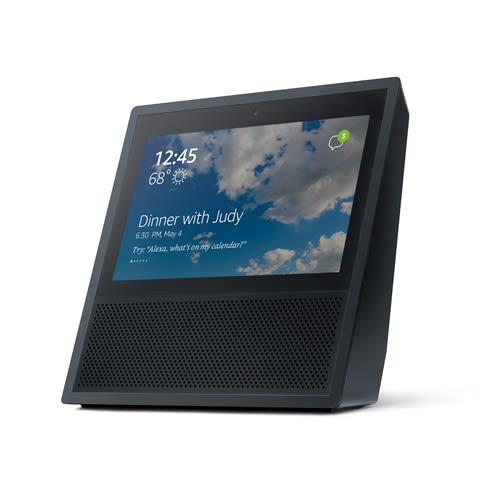
The Amazon Echo Show has an in-built LCD screen
The Amazon Echo Show has an in-built LCD screen
Vista Retail Support technical services director James Pepper says visuals have been the “missing element” of these devices as a lot of things can’t be explained aurally.
He believes shoppers will search by voice and then scroll through results visually on the new-generation devices.
This should open up opportunities via voice search for brands and retailers across many categories, including fashion.
In fact, Amazon’s Echo Look device – currently available to buy by invitation only – is designed specifically for the style-conscious shopper and is described as a “style assistant”.
Users can take full-length photos and short videos using their voice to check out their outfits. Over time, Alexa will learn users’ style and make product recommendations.
A built-in feature called Style Check combines machine-learning algorithms with advice from fashion specialists to give users a “second opinion” and advise which outfit looks the best based on fit, colour, styling and current trends.
This functionality makes it a good route to market for clothing brands, but also provides Amazon with a platform to promote its own fashion credentials – an area that it is eager to build on.
Action points: what should you do now?
- Understand what types of searches people are making that relate to your product or service
- Make sure you have content on your website that answers these questions
- Build relationships with influencers to ensure your content offer is deemed credible
- Make sure your page is SEO-ready. Make it easy for search engine crawlers to assess your site
- Decide whether selling on Amazon is right for you. Search is increasingly being diverted away from Google, and Amazon is the big winner. Brands and retailers can benefit from selling on Amazon’s marketplace
VOICE TECH, SHOPPING AND ENGAGEMENT
Voice technology is not just impacting how we search – it’s changing how we interact and shop with brands.

The bulk of voice commerce currently takes place on Amazon.
Consultancy OC&C estimates that the online giant takes 90% of all spend via voice.
The seamless nature in which users can find products, add them to their Amazon basket and pay has undoubtedly driven this impressive market share.
Some retailers have attempted to sell using Amazon and Google’s voice ecosystems by developing branded shopping experiences on Echo and Home devices.
On Amazon’s Echo devices, skills are the apps of the voice world. Echo users can enable or disable branded skills in the same way that they can install or uninstall apps.
Ocado, Tesco and Morrisons have developed skills to enable shoppers to buy directly through them using Amazon Echo devices.
These skills allow shoppers to place items in their basket via voice command and create a continuous basket throughout the week.
Google UK head of search Alessandra Alari says: “This changing behaviour gives brands an opportunity to use voice search as their ‘always on’ connection, so that they are constantly available to engage and assist consumers.”
What makes a good skill?
The really good branded skills have been based around utility so far, according to Mindshare futures director Jeremy Pounder. “The best skills take away the friction of doing a task,” he explains.
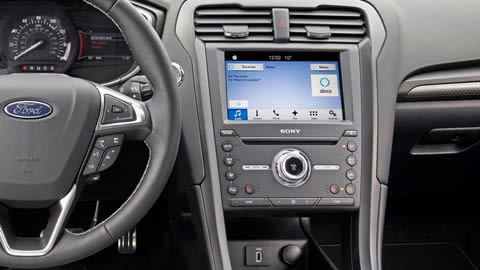
Amazon’s Alexa is built into Ford cars, allowing users to pre-order a coffee from Starbucks
Amazon’s Alexa is built into Ford cars, allowing users to pre-order a coffee from Starbucks
Pounder uses the example of the Starbucks skill in the US, which allows users to pre-order coffee from the in-built Amazon Echo in Ford cars for pick-up at its drive-through locations.
“That’s a great example of a specific moment, when buying via voice is better than any alternative,” says Pounder.
Domino’s Pizza launched a skill in the UK late last year to allow its customers to order their favourite pizza using just six words: “Alexa, ask Domino’s to feed me.”
Tom Ollerton, innovation director at Domino’s agency We Are Social, says the takeaway firm’s customers tend to order the same pizza to the same address, so the reordering skill makes this process even easier than tapping its app.
Pounder also highlights Tesco’s presence on Amazon Echo and Google Home as an experience that makes life easier for users.
Shoppers can buy Tesco groceries on both devices as a result of its collaboration with IFTTT, a platform that joins together shoppers’ online accounts.
"The best skills take away the friction of doing a task"
Tesco Labs head of technology research Paul Wilkinson says: “If the customer shops with us regularly, we do our best to match this command with the products they normally choose, so their usual two pints of semi-skimmed milk are added to their basket – not just the first result that’s returned.”
It is no surprise that grocery retailers like Tesco have been the first to market in the UK with branded skills.
The transactions that are taking place via voice right now tend to focus on reordering and replenishing products, making supermarket shopping a good fit.
Vista Retail Support technical services director James Pepper says: “It’s really inconvenient to shop online for grocery.
“Building a shopping list as and when you remember, then completing the transaction once a week, really simplifies the process.”
Skills shortage
An increasing number of brands and retailers are developing Alexa skills, with Amazon reporting a 428% increase in these year on year.
However, the consumer uptake of skills is thought to have been limited so far.
According to a 2017 report by VoiceLabs, only 31% of Alexa skills have more than one customer review, which suggests they are not being used regularly.
The fact that users need to enable these skills and specifically ask Alexa to add goods to to their Ocado or Tesco baskets makes this a clunky process.
Voice is about ease, and if Amazon is a plausible place to buy products – which it is across a wide range of categories – users will not take the extra step of asking Alexa to purchase through a particular skill, unless there is already strong brand loyalty there.
OC&C partner Will Hayllar says: “The risk, which is part of Amazon’s objective here, is making it more and more easy to shop through them.”
Selling via Google Home
On Google, brands can create ‘actions’ that allow Google Home users to get things done with specific brands.
Unlike Amazon Echo skills, users do not have to enable a branded experience or request that Google Assistant uses it.
Instead, the assistant decides which is the best action to fulfil the user’s request – much like a traditional search engine – and then asks if they want to use it.
The fact that consumers do not have to explicitly search for this action, as they do on Amazon, can make interaction with brands easier on Google’s voice platform.
Is a skill or action right for your brand?
Skills and actions are not right for every brand as, just like apps in the mobile world, there are only a limited number that the shopper will use.
And right now one of the biggest players in voice, Amazon, is a retailer in its own right and will offer shoppers an in-built vast range, sold at competitive prices, with a completely seamless shopping experience.
Accenture managing director of retail technology consulting Rob Barnes says that some retailers, particularly those operating in categories that are commoditised, should insert themselves into Amazon’s supply chain by selling on its marketplace, rather than investing in their own branded experience.
However, retailers who sell more unique product and have a distinct offer should create their own skills and actions to give customers a similar experience via voice that they would get across other sales channels.
Brand building through skills
Skills aren’t just about ecommerce; they can also offer an effective route for consumers to engage with brands.
Barnes says that, when developing skills, retailers need to focus on “meeting the everyday needs of their customers on this platform”.
For fashion retailers, this might be style advice rather than product information, for example.
FMCG giant Unilever has launched several skills to engage with its consumers.
Its Recipedia skill gives step-by-step instructions on how to cook more than 650 meals, while its Cleanipedia skill shares household tips.
Both include subtle references to Unilever products.
Similarly, drinks manufacturer Pernod Ricard launched the What Cocktail? Alexa skill to help users mix drinks at home, and washing powder brand Tide has a skill that tells users how to get rid of 100 different stains.
There is also an opportunity for brands to entertain users through voice-enabled devices.
Last Christmas, John Lewis partnered with Google Home to release an interactive audio storybook for children based on Moz the Monster, the star of its Christmas campaign.
Children could use the Google Home speaker to read aloud and ask questions about the story.
Action points: what should you do now?
- Determine whether a branded shopping or engagement experience is right for your brand
- Assess what purpose a skill or action would serve for your shoppers. Would it be transactional or would it provide unique content?
- Decide which platform works for you. Amazon may be more of a transactional environment, but can you entice shoppers to take the extra step to download your skill?
VOICE TECH AND CUSTOMER SERVICE
Smart home technology is spearheading consumer voice interaction. However, experts believe people will soon feel comfortable using this technology outside the home as well.

For retail, the obvious next step is bringing voice assistance into stores.
Rob Barnes, Accenture’s managing director of retail consulting technology, says this could be win-win for consumers and retailers.
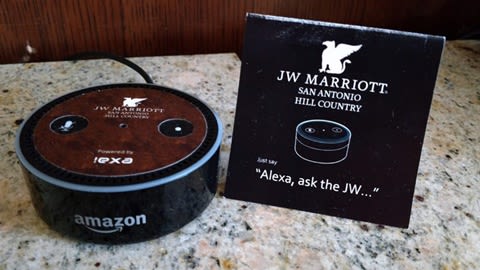
Amazon’s Echo Dot can now be found in some JW Marriott hotels
Amazon’s Echo Dot can now be found in some JW Marriott hotels
“The common complaint you hear from consumers is that they want to engage with staff in store,” he says.
“Meanwhile, retailers say they want to take staff away from more mundane tasks. This could be the solution.”
“It’s hard to have highly knowledgeable experienced people across all stores in your network. Voice could offer a new heightened customer experience by making it accessible to the customer in a way they would be comfortable with.”
Voice-activated products have already been used to provide customer service by a number of hospitality brands globally.
In San Antonio, Texas, the JW Marriott resort uses Echo Dot in its hotel rooms to inform guests about restaurants, room service and directions.
Meanwhile, in Japan, Henn-na hotels use robots to check in guests.
Mindshare futures director Jeremy Pounder says fashion retailers could embed voice assistants into changing rooms. These could order products in different sizes and even offer style advice.
There is also an opportunity for brands to link this customer-facing, voice-enabled technology with back-end systems, such as real-time stock information, to further enhance the experience.
Navigating the store
Technology is already being used by retailers to help shoppers navigate stores.
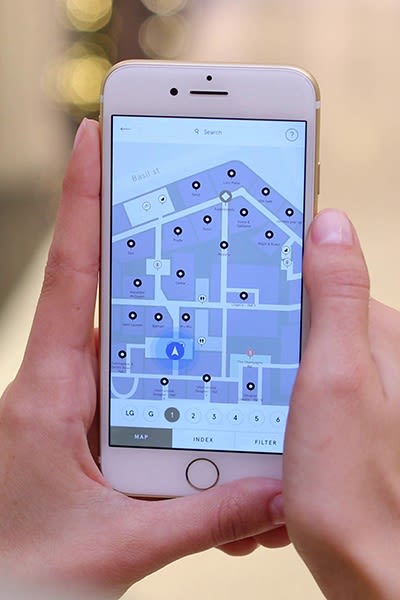
The Harrods app includes an interactive store map to aid shoppers
The Harrods app includes an interactive store map to aid shoppers
Harrods makes use of interactive maps on its app to help shoppers find specific brands and products at its Knightsbridge store.
And Barnes says interactive voice response technology could solve simple queries, such as giving directions to specific products.
By using either voice-enabled devices or shoppers’ own smartphones, retailers could bring these directions to life and facilitate conversation between users and virtual store assistants.
Tesco Labs head of research technology Paul Wilkinson told delegates at Retail Week’s Tech. event last year that there was “a lot of opportunity” for the grocer to deploy voice search tech in-store to allow shoppers to locate items on their shopping lists faster.
He said voice-activated devices could be linked to shopping trolleys or to a voice-activated assistant on a retailer’s mobile app.
Tech for colleagues
And it’s not just shoppers that could benefit from voice technology.
Wilkinson says store colleagues could use it to check information like stock levels, delivery schedules and promotions in-store, as well as helping customers with specific queries.
When mobile devices such as iPads and kiosks were first introduced into stores, some retailers found shoppers reluctant to use them.
However, when staff used this technology to assist shoppers instead, real value was achieved.
“We already have our colleague app Inform, which enables colleagues to scan products and quickly receive information about them, so voice could be part of making that even more helpful,” says Wilkinson.
Action points: what should you do now?
- Identify the real benefits of introducing voice technology into store – avoid having tech for tech’s sake
- Explore whether voice devices could carry out more routine tasks to free up customer service staff to focus on more complex issues
- Identify ways that voice technology could make colleagues better informed
VOICE TECH, DELIVERY AND DISTRIBUTION
Voice technology could also help boost productivity and improve customer experience across delivery and distribution.

One of the objectives of Amazon Echo is to make shopping with Amazon easier, and tracking parcels is a fundamental function of the device.
By asking “Alexa, where’s my stuff?” shoppers can find out the status of their Amazon order. Users can also set up notifications to be informed when their purchases are sent out for delivery.
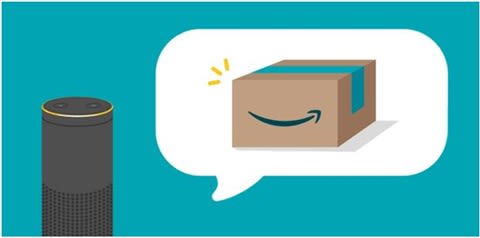
The ring light on Alexa devices turns yellow when there is a delivery notification for the user
The ring light on Alexa devices turns yellow when there is a delivery notification for the user
Parcel tracking is one of shoppers’ most desired delivery options – according to a Retail Week survey last December, 40% of shoppers said the ability to track parcels was the most important element of delivery.
Parcel tracking on voice-enabled devices could save shoppers calling a contact centre or logging on to a web portal. It is a core function of Ocado’s Alexa skill.
Courier Hermes has launched a parcel-tracking service on both Amazon Echo and Google Home to allow shoppers to do just that.
On Amazon Echo, users have to enable the Hermes skill, but Google Home customers simply ask Google Assistant where their Hermes delivery is and are updated with the location of all parcels in transit without having to input a barcode or postcode.
Hermes senior digital imagineer Carl Robinson says its customers are using this functionality.
“The experiences that we’ve put out have gained more usage than we expected, and they’ve proven sticky enough to keep people coming back using them,” he says.
“We’re removing obstacles and making it as seamless as possible.”
Warehouse uses
Productivity is under the spotlight in retail warehouses, and voice technology could enable employees to work more efficiently.
“Lots of warehouses are already using voice to direct pickers where to find items,” says OC&C partner Will Hayllar.
Workers use headsets and are given aural directions to product or pallet locations.
“It makes sense to use hearing rather than visual instructions as eyes are looking for product,” says Hayllar.
John Lewis has used voice picking for the past decade, and in 2015 implemented voice technology to improve the accuracy of loading onto vehicles at its distribution centres.
The technology, provided by Voiteq, was introduced to prevent errors in the loading of goods to store, which it said at the time was “a reasonably frequent occurrence”.
John Lewis distribution systems manager William Armitage said: “We can only put that down to the process of having to hold devices for scanning or interacting with screens and keyboards.
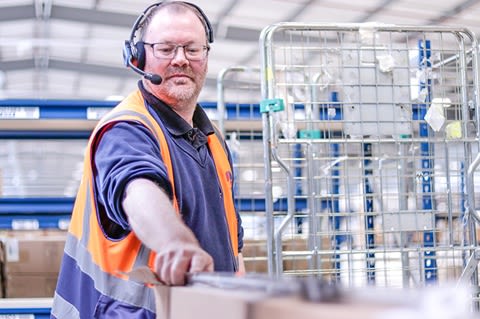
John Lewis has been using voice picking in their distribution centres for the last decade
John Lewis has been using voice picking in their distribution centres for the last decade
“We wanted a solution that offered partners the same productivity, increased accuracy and hands-free, eyes-free benefits of the voice-directed system we already successfully use for picking.”
The technology translates on-screen instructions into voice and then enters the user’s verbal response back to the screen.
This enables employees working within the loading environment to be completely hands-free.
Tesco Labs head of technology research Paul Wilkinson says tech of this type could help its warehouse workers.
“Voice could complement our picking activity, enabling colleagues to confirm when a task is completed simply by saying so, making their experience even simpler,” he says.
With voice recognition technology integrated into the majority of modern smartphones, Robinson says there could be an opportunity to harness these devices in retail warehouses, rather than investing in hardware.
However, he sounds a note of caution about bringing emerging technology such as voice recognition into workplaces.
“When you force employees to use new technology, it generally doesn’t work,” he says.
”When consumer adoption of this technology is higher and employees are using it already in their day-to-day lives, it opens up more uses in a distribution environment.”
Action points: what should you do now?
- Look to bring parcel-tracking functionality to your businesses’ skills and actions on voice-enabled devices. Tracking improves customers’ delivery experience and doing this via voice is quick and easy. It can also reduce call centre activity
- Assess the benefits of bringing voice recognition systems into your warehouses. This can make picking, packing and loading safer and more accurate
Finding your voice
Written by Gemma Goldfingle
Produced by John Beaumont and Nathan May
